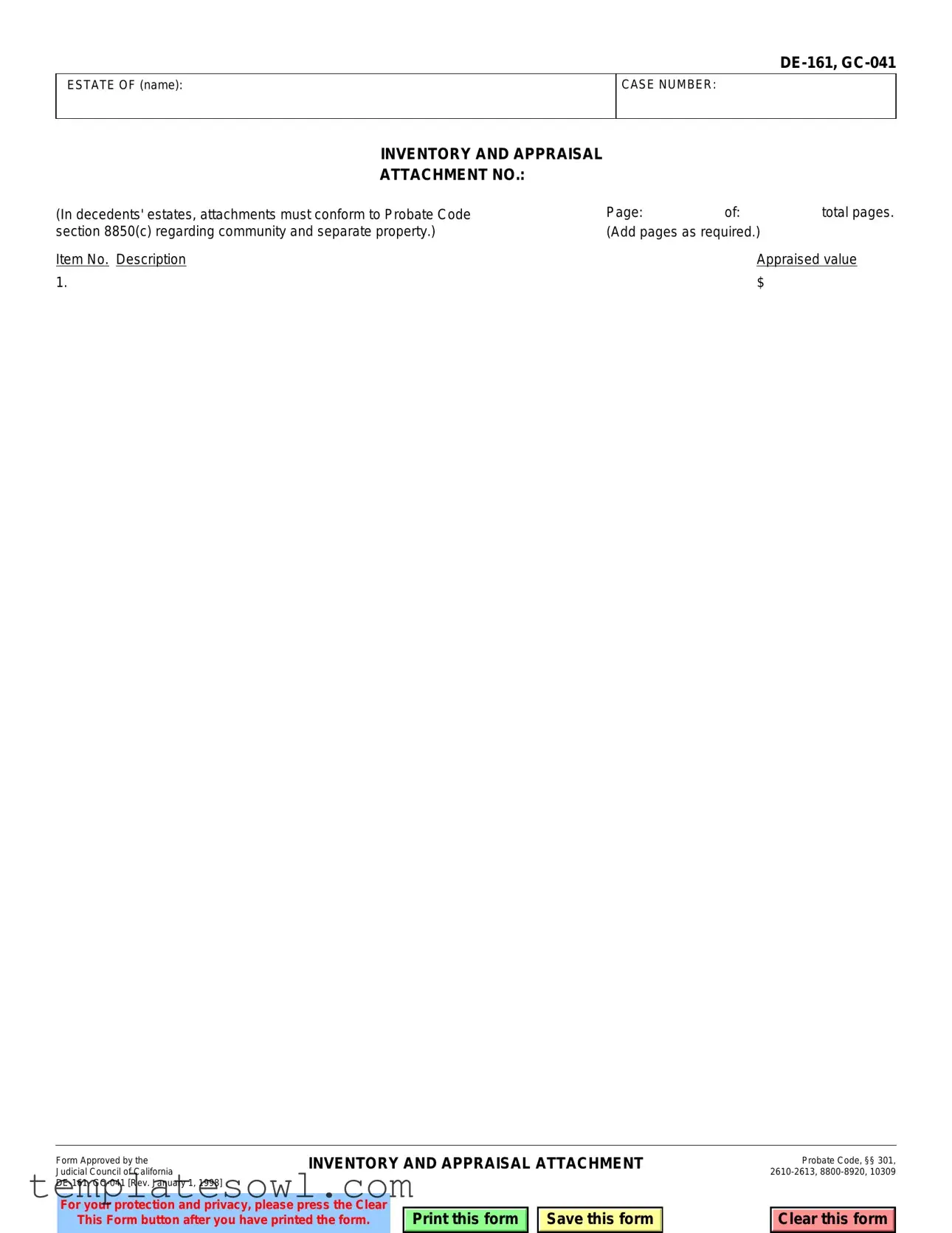What is the purpose of the DE-161 GC-041 form?
The DE-161 GC-041 form is used to create an inventory and appraisal of a deceased person's estate. It helps to list all significant assets and their appraised values. This form is crucial for providing an accurate overview of the estate during probate proceedings.
Who needs to file the DE-161 GC-041 form?
This form needs to be filed by the executor or administrator of the estate. If a person has passed away and there are assets to administer, the responsible party must gather the necessary details and complete this form for submission to the probate court.
What information is required on the form?
The form requires basic information about the deceased individual, such as their name and the case number. You will also need to provide a list of the estate's assets, including their descriptions and appraised values. It's important to have complete and accurate details to avoid issues later on.
Can additional pages be added to the DE-161 GC-041 form?
Yes, additional pages can be added if necessary. The form includes a section to indicate total pages. Just ensure that any extra pages follow the guidelines outlined in Probate Code section 8850(c), especially concerning community and separate property.
Is there a privacy feature for the DE-161 GC-041 form?
Yes, for your protection and privacy, the form includes a "Clear This Form" button. It is highly recommended to press this button after printing the form to ensure that no personal information remains saved on the device you were using.
Where can I find the DE-161 GC-041 form?
The DE-161 GC-041 form can be obtained from the Judicial Council of California's website or directly from the probate court. Always ensure that you have the most current version of the form to avoid any delays in the process.

